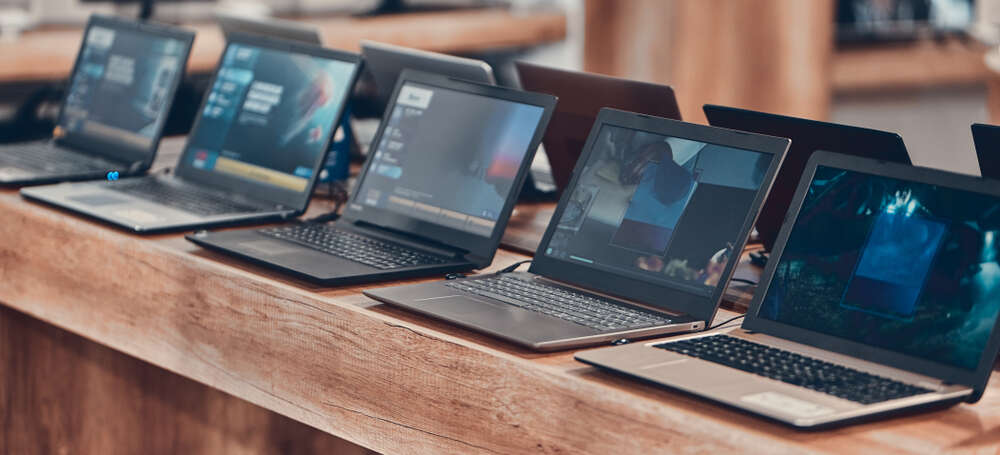
Global PC shipments have dropped 19.5% year-on-year according to new analysis by Gartner, the steepest decline since the mid-1990s. This could represent the end of the boom cycle that has been affecting the market since the Covid-19 pandemic and will likely be a short-lived downturn, an expert told Tech Monitor.

There were 68 million PC units shipped worldwide in the third quarter of this year, the research company found in their preliminary analysis, describing it as a “historic slowdown for the PC market”.
Gartner director analyst Mikako Kitagawa said high levels of inventory have become a new major issue after supply chain disruptions eased. This is due to “weak PC demand in both the consumer and business markets”.
Despite massive promotions, price drops and back-to-school offers, sales have been “disappointing”, said Kitagawa. It is thought this is because a flurry of PC buying which has occurred over the last two years, driven by the pandemic and the widespread switch to hybrid and remote working, means people now aren’t looking to upgrade.
“On the business side, geopolitical and economic uncertainties led to more selective IT spending, and PCs were not at the top of the priority list,” Kitagawa added.
PC market: some manufacturers are doing better than others
It was a better year for some PC manufacturers than others, the Gartner analysis revealed. Lenovo gained market share on the same time last year despite a year-on-year decline in shipments. This was due to the desktop market in Europe, the Middle East and Africa (EMEA), which was helped by an in-house European manufacturing facility opening in Hungary in June.
HP had a tough quarter with a sharp drop in overall global shipments but did see some desktop market growth in some markets. Dell was able to narrow its market share difference with HP after recording year-on-year growth in the desktop market everywhere but Asia-Pacific.
PC shipments also varied by market with the US seeing a drop of 17.3%, the fifth consecutive quarter of year-on-year shipment decline in a row. A lot of that came from slower laptop sales as there was modest growth in the desktop market driven by businesses and public sector purchases.
This is likely a result of companies bringing employees back into offices after having them work from home on laptops during the pandemic.
“Inflation is the biggest concern in the US market, but smaller businesses are showing relative optimism about macroeconomic conditions,” said Kitagawa. “While laptop demand among large companies sharply decreased in the third quarter of 2022, small and mid-size businesses did not show as steep of a drop.”
Regional differences in the PC market
In Europe, the PC market was hit harder than the US with a 26.4% year-on-year drop, but this was only the third quarter in a row as there was a significant boom in sales at the start of the pandemic.
“Multiple factors led to significant deterioration in the EMEA PC market, including challenging macroeconomic conditions, declining business and consumer demand and high levels of inventory,” said Kitagawa.
Not including Japan, the Asia Pacific market saw one of the lowest declines at 16.6% year-on-year which was due to slower shipments in China.
Daniel Newman, principal analyst at Futurum Research told Tech Monitor this is the last stages of the "boom cycle" fuelled by the pandemic.
“With economic activity slowing, fed tightening, and a mass of PC purchases already made in the past 1-2 years both by consumers and businesses, it shouldn’t be surprising to see a steep, but likely short downturn in PC demand—highlighted not just by this research but recent results shared by AMD," Newman said.
Last week AMD issued third-quarter results that were well below its initial guidance. It had expected revenue of $6.7bn but actual revenue was $5.6bn.
The chipmaker blamed the shortfall on “weaker than expected PC market and significant inventory correction actions across the PC supply chain”.






